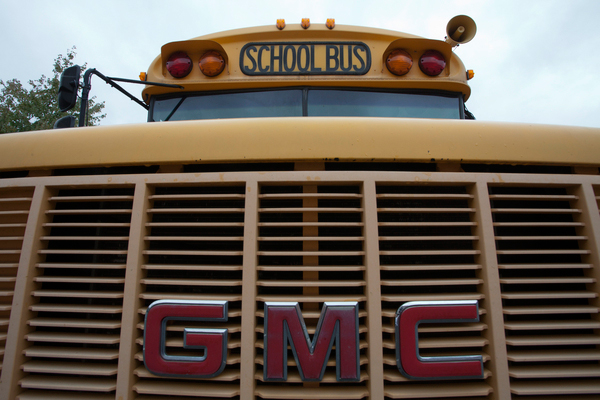
Photo by: Marc Fader
In 2006 the city school system paid an outside contractor $15 million to rethink the city’s bus routes. The result, one critic says, was a “fiasco.”
Literally freezing out public school kids might not have been what Alvarez & Marsal, the maverick “turnaround” firm hired by the New York City Department of Education (DOE), sought as its legacy in New York City, but one frigid January morning and thousands of stranded kids settled that score.
After A&M won a no-bid $15.8 million city contract to help the DOE streamline its budget, the global consulting company saw opportunities for the department to save money, especially on some school-bus routes that the Bloomberg administration said were carrying too few students and wasting millions of dollars in the process. A&M predicted savings by rearranging and eliminating such “unnecessary” routes. According to a 2004 article in Business Week, back in the ’80s, partners Bryan Marsal and Antonio Alvarez solidified their vision for their company over a game of golf. Their philosophy, forged over the tee: “It’s better to make a decision, be 10 percent wrong and 90 percent right, than not to address the problem.” They’ve since applied that theory to such companies as Hostess, which was suffering financially after redoing its cupcakes and Ding Dongs recipes, rendering them “doughy and unappetizing.”
In 2003 came its first foray into the public sector: A&M was hired to help St. Louis schools consolidate their bus routes, as part of an effort to overhaul the city’s financially strapped public school system. In April 2005, A&M was hired to oversee the reconstruction of the failing New Orleans school system. Then, in August of 2006, the DOE’s Division of Contracts and Purchasing approved a request from the office of then-chancellor Joel Klein to retroactively hire A&M for the period spanning June ’06 to November ’07.
At the time, the Bloomberg Administration was in a big hurry to implement “Empowerment Schools,” an initiative to transfer authority over curriculum and budget from the DOE to individual schools, if said schools agreed to meet certain performance goals. The plan required that services provided centrally, like transportation, be streamlined. For this reason, there would be no time for a competitive bidding process. The DOE’s Committee on Contracts green-lighted the no-bid A&M deal, giving the firm—which was already working in the public schools under the auspices of the Klein-led nonprofit Fund for Public Schools—a guaranteed payday that the DOE justified on the grounds that A&M was the only firm to have done this type of restructuring work with public schools before and that it has done so with dramatic success in St. Louis and New Orleans.
But in November 2006, before A&M released its rejiggered busing plan, the City Council’s education committee released a report that raised issues with the A&M contract itself, namely the salaries paid to its top consultants ($450 per hour) and outrageous expense reports (an estimated $1.5 million for the duration of the contract). The report also expressed alarm over a larger issue: the fact that the DOE’s contract budget had more than doubled, from $1.28 billion in 2002 to $2.68 billion in 2006, with the cost of no-bid contracts growing from $12 million in 2002 to $56 million in 2006.
While DOE officials credited A&M with improving St. Louis schools, Public Advocate Betsy Gotbaum said in a statement that “Alvarez & Marsal … left [St. Louis’] school district in a shambles” and that “even a cursory check” of A&M’s track record there “would have been enough to raise suspicions.” After A&M departed St. Louis, the school system was taken over by the state on the brink of bankruptcy.
Many in Missouri faulted the consultancy for its cost-cutting and school-closing; some said A&M did its job of trying to balance the system’s books.
Yet there was no escaping the fact that there are twice as many children in pre-K and kindergarten in New York as in the entire St. Louis school system. Would A&M be up to the demands of so huge an educational empire? Two months later, in January, came the answer. For weeks following the implementation of the new busing plan, the DOE received thousands of calls from furious parents: Many buses never showed, leaving kids waiting in the cold; and some kids as young as 5 were given MetroCards and left to fend for themselves. “It was a disaster,” says Council Member Robert Jackson, the chair of the education committee, of the A&M plan, “in retrospect, just a complete disaster.”
In the midst of it, school officials set up a hot line that fielded more than 2,000 calls on the first two days.
Asked to comment on the snafus, the mayor said: “I think there were the teething pains which you could expect. Could they have done it better? Could they have handled the press better? Sure. But let’s get on with it and get things done.”








